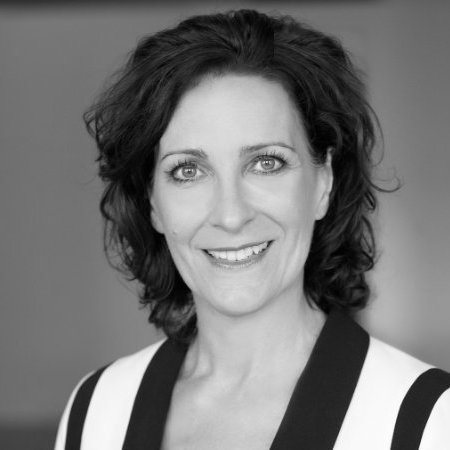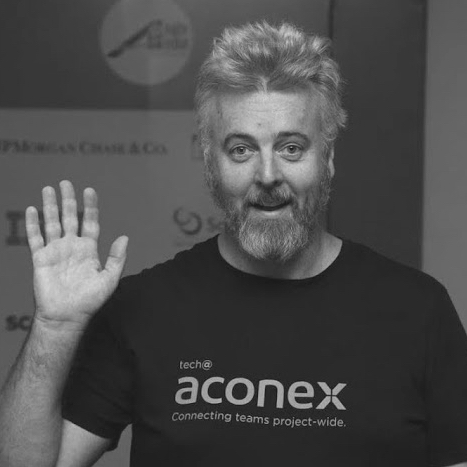Day 1
Day 1 - Morning
All sessions on Day 1 will be in the Auditorium
Alistair Cockburn
Introducing the Heart of Agile
The Heart of Agile is first of all about people collaborating to share ideas, and reflecting on those ideas. The opening session is a warm up to this aspect of the conference. I will introduce the idea of "agile no kokoro" - the essence, or heart of agile, and then look for ways for people to meet each other and start sharing stories. It will be great if people enter the conference thinking: "I can't wait to get into a good discussion," instead of "I can't wait to sit for 6 hours and maybe hear something useful."
Please come with a mind to go fishing for information from other attendees and enjoy this opening session.
Jurgen Appelo
Seven "silver bullets"
In his work, such as his books Management 3.0 and Managing for Happiness, Jurgen talks about many techniques and practices for teams and managers in the 21st Century. Much of what he talks about borrow from, or align with agile principles and the pillars of the Heart of Agile. Jurgen focuses on showing how we can change and improve the way collaborative work is managed. Some of the questions that people have that Jurgen addresses are:
- How can we motivate people?
- How can we change organisational culture?
- How can we change management mindset, get teams to take responsibility and improve trust, teamwork and collaboration?
- How can we develop people?
- How can we be agile when an organisation isn't?
Hannah Browne
There is no skills shortage…
Improve
There is no skills shortage…only a shortage of companies where folks with skills want to work.
Access to talent is not our industry’s biggest constraint. Failure to invest in improvement is. Effective prioritisation, experimentation, personal development, process improvement, collaboration and communication can all have a massive impact on the output of individuals, teams and organisations. So why are so many organisations ignoring these obvious efficiency gains? This talk will explore how internal process improvements can increase output and capacity of the entire organisation.
You will learn:
- the value of tackling hard process improvement and where to start.
- that you should work smarter not harder, and if you can't, resign and go to an organisation where you can
- The skills shortage is an excuse
- how to set appropriate expectations
- how to create systemic change
- about the critical nature of inspirational leadership
Matthew Hodgson
Scrum: Declutter. Optimise.
Deliver
Come and learn how to unclutter the dogma surrounding Scrum's 20 year history to find a powerful Lean, user-centred powerhouse for collaborative improvement. Some people throw away Scrum after a while through the false belief that its just for newbies. When you get back to Scrum's origins -- Lean -- and strip away you find a treasure trove of simple Patterns that help teams improve collaboratively using the Scientific Method.
You'll learn:
- Scrum -- What is it at its core?
- Scrum myths
- Back to basics -- Team size, Sprint length and making key Scrum events
- Scrum as a Lean practice with learning hypotheses
- how to improve productivity by +200% in a few months by just doing "good Scrum"
Day 1 - Afternoon
Eduardo Nofuentes
Transforming the enterprise
Collaborate
This is the story of the agile transformation of a company called Vicinity Centres. They are an ASX Top25 company with more than 1200 employees. Vicinity is not a digital company and I would like to share how we have used an agile mindset, tools and practices to drive change, improve employee engagement and business results across all areas and functions of the enterprise.
You'll learn:
- How agile can be applied to non software development teams
- How agile can be used as a change management tool
- How can agile can work in a large enterprise
- how to apply agile outside software development and as a change management tool.
Andrea Blundell & Pru Gell
Team Safety Through Deep Democracy
Collaborate
In 2015 Google published a list of the traits that its most effective teams share, with the key one being “psychological safety.” Many organisations, whether they are going through agile transformation, or are agile by design, are looking to create and maintain an environment where self organising teams thrive. If psychological safety is one of the key ingredients to this, what does safety look and feel like? How do we know what level of safety we have in a team? And how can we increase levels of safety?
The Lewis Method of Deep Democracy offers a roadmap for teams to achieve safety so that they thrive. This talk shares the key tools to get groups on this road including the Resistance Line, Check-In and 4 Steps so that by the end of the talk you’ll walkaway with tools you can play with.
You'll learn:
- about the Lewis Method of Deep Democracy
- some key tools from the tool kit
- a diagnostic tool to assess how safe your teams are
- strategies for enhancing safety and enabling your teams to thrive
Gabor Devenyi
People Power - How to build teams based on the strengths of individuals and team-bonding exercises
Deliver
Managers put together teams often based on technical skills only. You may have requirements for “a senior Java developer, a junior DBA and a BA with banking experience”. But there is a lot more to building a team that collaborates well and delivers value frequently. The team members will have different strengths and weaknesses. It’s important to understand that a diverse team that uses the strength of the individuals will outperform a homogeneous team with similar skillset.
Takeaways
- Ideas for team-bonding exercises to increase collaboration
- Changing perspective and finding positives in individuals that help the delivery and the team collaboration
You'll learn how to:
- Focus on strengths first
- Find individual strengths
- Build a diverse team
Emma Sharrock
Leading Change with Agile
Improve
As the world around us becomes more uncertain and complex, change is inevitable. We all seek to influence change professionally and personally with mixed results. Agile methods offer practical ways of influencing behaviour to realise outcomes. This talk details the four key behaviours we can adopt and role model to achieve true agility and lasting change. We dive into strategies for mastering these behaviours as well as discuss anti-patterns and consequences of when good intentions go wrong. By the end of this talk participants will have a sound understanding of how they can make small changes in their own behaviour to make the biggest difference.
You will learn:
- a model for influencing change
- Four key behaviours to achieve lasting change
- Strategies for influencing behaviour through changing the environment
Lily Ryan
Wildman Whitehouse and the Great Failure of 1858
Reflect
In the 1850s, Edward Orange Wildman Whitehouse was appointed the lead engineer of the first attempt to build a trans-Atlantic telegraph cable. With the entire population of two continents waiting for his go-live, he demonstrated in fine form just how spectacularly a big project can be a bigger disaster. This is your chance to learn from the mistakes of one of the biggest tech delivery projects in history, and to hear how our grandparents' grandparents faced many of the same challenges we do today.
The biggest takeaway is that good project development requires an open mind and a willingness to listen above any technical ability.
You'll learn:
- How to handle complex tasks gracefully
- the importance of being open to feedback
- how to foster good team relationships to deliver great work
Networking drinks
Please join us at the conclusion of the day, with networking drinks at a nearby venue
Day 2
Day 2 - Morning Keynote
We will convene in the main auditorium for Angela Ferguson's morning keynote, as the self-selection exercise for the following workshops.
What’s your talk and/or workshop about? Where did the inspiration come from and what do you hope people can take out of it?
Angela – Good question. And a hard question. I’m working on two ideas at the moment and I’m actually not sure…which one I’ll be using on the day. It also depends on the conversations I have with people on day 1!
One idea is around the importance of engineering excellence at the heart of agile software development (and excellence in whatever it is you’re doing if not software). Honestly, why bother optimising the way in which you collaborate around and arrange work, if the work you’re producing is substandard?
The other idea is around how I (and my colleagues) use an agile mindset to run a half-billion dollar global company. And the difficulty I faced in transitioning from a delivery mode (I’m a project manager by trade) to a general management role.
Day 2 - Morning Workshops
After the morning keynote, we will self select into 4 different workshop sessions. Details of sessions can be seen below.
Deliver: The Playing Lean Game
You can read about aerodynamics, but it won't teach how to fly. You can, however, learn how to fly in a flight simulator. It is a risk free environment where pilots-to-be can make wrong decisions without damaging expensive equipment or causing loss of life. Playing Lean is a "flight simulator" for innovation and Lean Startup. It's an enjoyable board game where players are forced to make difficult choices without risking their life savings or the future of their workplaces. The worst case scenario is a humiliating defeat at the hands of your colleagues (quite scary, actually).
Playing Lean simulates the experience of launching a successful product into a board game that can be played in 90 minutes. Along the way, players will learn the core concepts and vocabulary of the Lean Startup. And they will remember it because they have experienced it.
Reflect: Applying agile and lean mindsets
This workshop will help participants to reframe an actual business issue they face using an agile and lean framework and to learn how to begin to apply a different mindset to this issue.
You will learn:
- what are the key agile and lean mindsets, principles
- how to apply them to an actual business issue
- that agile is mainly a mindset and not a set of tools and how to start a mindset shift
Improve: Draw the Drawing
In this workshop/simulation we will model the challenges inherent in working together on delivering projects, and taking a look at the payoff for responding to feedback along the journey rather than waiting to the end.
We’ll run a simulation of creating a product and you’ll take on a role on either the design or the delivery team. As the project continues you’ll be collaborating, delivering, reflecting and improving. And while the Heart of Agile is all over this activity our focus is going to be on the who, what, when, how and why of Improving.
Come along for a fun and energetic activity that will hopefully give you insights into how you too can improve back at your workplace.
This workshop comes to us from Alistair Cockburn’s Advanced Agile training course which is being run in March, in Melbourne. He, in his turn, lifted and evolved it from others, and we have made our own modifications to fit the conference format.
Collaborate: User Story Mapping - The Story Mapping Game
The user story format is well known and used in many companies applying agile principles. However, teams often don’t know how a user story relates to other user stories and how they all fit into the bigger picture. Chipping away at seemingly random user stories that only define a specific feature can be the result. In an ideal world, you’d like teams to own and deliver on the shared vision and to keep the user’s journey and interest at heart. Creating and collaborating on user story maps as a team can make all the difference and lead to better products.
Come along to playfully learn how to create a story map in collaboration with your (workshop) team. It’s a fun way to come up with your team’s big picture story map, reflecting the user’s journey. This story map will inform your future delivery cycles and releases.
Having experienced the technique in a game setting will make it easier to remember, so that you can apply it in your own work places thereafter.
Day 2 - Afternoon Workshops
Deliver: Understanding Test Driven Development
James Holmes' workshop will give you an understanding of what Test Driven Development is and what its value is to teams who are developing software.
It's a hands-on session, where participants will pair up and work together using some simple tools. This will allow us to understand how:
- we can develop the functionality of a system by describing the behaviour of the system in the tests
- we can make sure that what is produced is tested at very regular intervals and not just at the end.
Prior development experience is not necessary; if you’ve always wondered what TDD is about and why developers do it, this workshop is a great way to find out. Bring your own laptop if you can, but if you can’t we’ll pair you up with someone who has.
Collaborate: The World of Co: How to design, create and facilitate collaborative environments that get work done
At the heart of agile is collaboration. But we can’t simply tell a team or group to ‘go collaborate now, will you!’ and expect it to all work out immediately, magically.
As collaboration shows its true and powerful colours of being able to help us do more and do it better together, we owe it to our colleagues and clients to know how to make great collaboration happen. It involves thinking, designing, creating and facilitating. Add to your toolkit today by drawing on a range of approaches, methods and ways of helping people collaborate, across timezones, cultures, business units and teams. The session will include content from Lynne Cazaly’s books and work on sensemaking, facilitation, creativity and productivity.
Improve: Improve your change outcomes
‘You can’t control the way people are going to respond to change, but people are more likely to be engaged if they are involved in designing the change,’ – Jason Little
We know that in an increasingly complex and agile world it is important to be able to skilfully engage people and respond more quickly to change.
Many of us are also experiencing how the agile movement is influencing how we do our change work.
Lean Change is a powerful 3 step collaboration framework based on Jason Little’s Lean Change Management Practice - an approach that uses ideas from Lean Startup, Agile, Organisational Development, and Change Management to help you design the best approach to your change.
Start charting your path to becoming an early adopter in this fast emerging lean change world and be prepared to disrupt how you think about, talk about and implement change.
You will learn:
- A new change lens that allocates attention to Leadership, Collaboration and Communication.
How to apply Agile thinking to change programs
- The 3 step Lean Change Cycle - Insights, Options, Experiments
- Different activities that cover the planning, engagement and delivery phases of change programs
Reflect: Retrospectives and Celebration Grids
Who here knows what a retrospective is?
Do you think they are great or do they kind of suck?
What systemic valuable change is coming out of your retrospectives?
Let's do an activity
Brainstorm all the recent improvements you have pulled out of retrospectives
Let's drop them onto this chart
Networking drinks
Please join us at the conclusion of the day, with networking drinks at a nearby venue.
